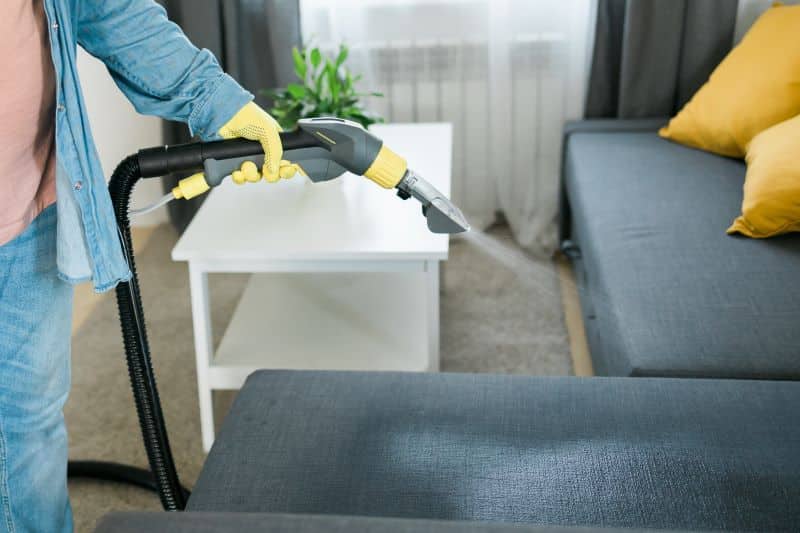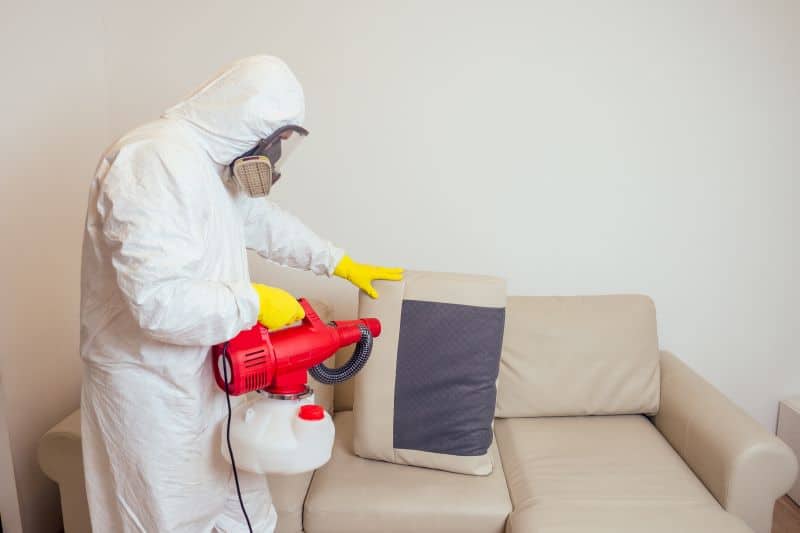Why Mould Shows Up on Upholstery in the First Place
Mould doesn’t need much to thrive—just moisture, warmth, and time. Synthetic fabric upholstery, especially in humid environments or poorly ventilated spaces, can easily fall victim. That old lounge in the garage? The couch that caught some rain through the open window? Perfect candidates for mould growth. Once mould appears, it’s not just a cosmetic issue—it can smell musty, affect air quality, and trigger allergies or respiratory issues.
Tackling it quickly and properly is important. But synthetic fibres can be tricky. They don’t always respond well to harsh scrubbing or strong chemicals. Knowing how to approach the problem safely will protect both your furniture and your health.
Step 1: Assess the Extent of the Problem
Before grabbing any cleaners, take a closer look. Is it just surface-level growth in a small area, or is it widespread and deep-set? If the mould is extensive or has had time to penetrate the cushions or padding underneath, it may be time to call in professionals. Small patches, however, can often be treated safely at home.
Check the care label on your furniture first—some synthetics are more sensitive than others, and certain cleaning methods could damage the fibres or affect the colour.
Step 2: Take It Outside (If You Can)
If the item is portable, take it outside before cleaning. This prevents mould spores from spreading throughout your home as you work. Sunlight also has mild antifungal properties, and fresh air helps dry things out quicker afterward. Lay the item on a drop cloth or tarp and wear gloves and a mask to protect yourself from spores.
If you can’t move the piece, open windows and set up a fan to improve ventilation while you clean.
Step 3: Dry Brush the Area First
Before introducing moisture or cleaners, start by gently brushing the area with a soft-bristled brush. This helps loosen and remove surface spores without pushing them deeper into the fabric. Be gentle—scrubbing too hard at this stage can spread the mould or damage delicate fibres.
Once you’ve brushed, vacuum the area with a HEPA-filtered vacuum to capture any loose spores. Dispose of the vacuum bag or empty the canister outside immediately.
Step 4: Apply a Mild Cleaning Solution
Avoid bleach—while it’s effective on hard surfaces, it’s too harsh for synthetic fabric and can permanently discolour it. Instead, opt for a solution of white vinegar and water (1:1 ratio) or a specialised upholstery-safe mould remover. Vinegar is effective at killing most types of mould, and it’s far gentler on fibres.
Dampen (don’t soak) a clean microfiber cloth or sponge with the solution and dab the affected area. Avoid rubbing—it can fray the fabric or push mould further in. Let the solution sit for 15 to 20 minutes so it has time to kill the spores.
Step 5: Rinse and Blot Dry
After the solution has done its job, gently blot the area with a cloth dampened in clean water to remove any residue. Then, use a dry towel to blot again and soak up as much moisture as possible. Follow up with a fan or hairdryer set on cool to speed up drying.
The quicker you dry the fabric, the less likely the mould is to return. Don’t be tempted to put cushions or covers back on until everything is completely dry.
When to Call in the Experts
Sometimes, home treatments aren’t enough. If the mould keeps coming back, has soaked into internal padding, or if the fabric is particularly fragile, it’s best to get professional help. Services offering Upholstery Cleaning in Newcastle often have the tools and antimicrobial treatments to tackle stubborn or deep-set mould without damaging the material.
Professionals can also assess whether the affected furniture is still safe to use—especially in cases where exposure to mould may affect young children, pets, or those with health sensitivities.
Preventing Mould from Coming Back
Once you’ve cleaned the fabric, focus on preventing future outbreaks. Here’s what helps:
- Keep indoor humidity below 60% using a dehumidifier.
- Ensure good airflow around upholstered furniture—don’t press it tightly against walls.
- Open windows regularly or run exhaust fans in humid areas.
- Deal with spills and moisture quickly—dry damp areas thoroughly within 24–48 hours.
If the furniture is in a basement or storage area, consider using moisture-absorbing products like silica gel or placing furniture on risers to avoid contact with damp floors.
Final Thoughts: Gentle, Timely Care Goes a Long Way
Removing mould from synthetic upholstery doesn’t require harsh chemicals or aggressive scrubbing—just a thoughtful approach and the right techniques. Acting early, choosing safe products, and drying thoroughly can make all the difference.
And if you’re ever in doubt, don’t risk damaging your furniture. Professionals who specialise in upholstery cleaning in Newcastle can bring peace of mind and ensure your space stays safe, clean, and mould-free.


